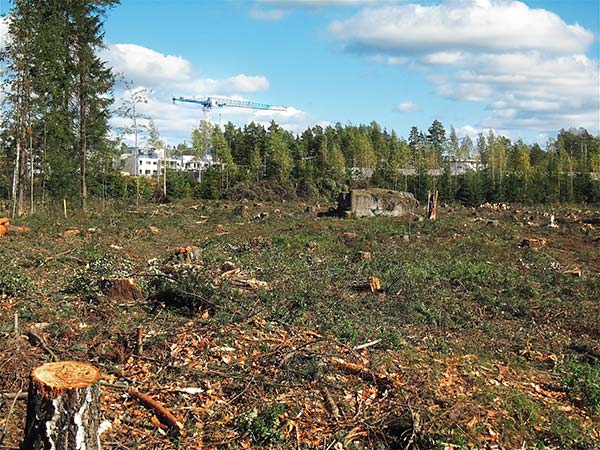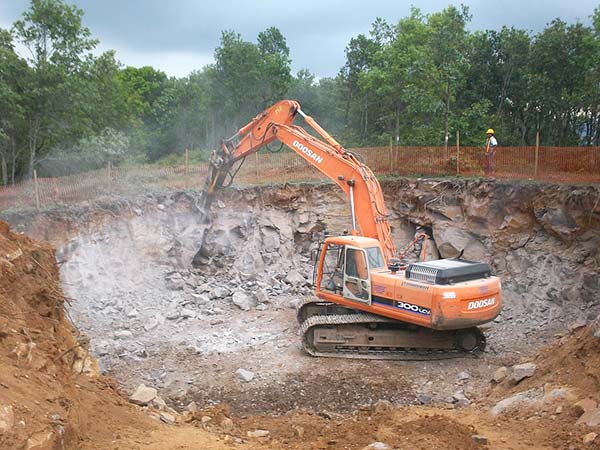You probably feel happy and excited about purchasing a lot and creating a plan for your area.
At the time of building a new home, a community project, or a business facility, some things can be time-consuming because it needs setting out, excavation, site clearance, and safety measures based on the depth of excavation.
Before you schedule your excavation and grab the shovel, there are several things to consider and check off in your to-do list.
Your hired builder would probably do the excavation checklist, but it is better to have an in-depth understanding of the entire process of the site work.
By that, you already have a good grasp that your construction site is ready for development.
To know more, here are five things to do before you dig your foundation.
Article Chapters
Have Your Property Surveyed
Whether you intend to purchase new land or have plans to build on property you already own, there are many reasons why you may need a feature or land survey.
Getting your property surveyed is a substantial way of preventing costly mistakes in the future.
A property survey is not only beneficial, but it is also a requirement for moving forward with your plans and the development of your construction work.
One of the reason is when you are trying to choose if the project will obtrude on someone else’s property.
Furthermore, it is also essential that you hire a land surveyor to avoid property line disputes.
Also, for you to know if whether or not a building is in a flood hazard area when you are preparing for a subdivision layout.


Owner’s Check Prior to Excavation Activity
You and your builder consultant should know some specific things before doing any activity in the construction site.
For excavation, you will want to inspect all cleanouts and manholes for damage and mark them with bright paint.
You also need to check the weather forecast the day before the excavation activity as you don’t want to open up the hole when it is raining.
Also, if you are building in cold temperatures, be sure that you have a plan for blocking the ground from freezing.
Site Preparation Process
The site preparation process is the first step to do and to be done.
A person who wants to build a new home, a community project, or a business facility need a clear and adequately prepared site.
There are various processes involved in preparing the site.
Here are some of the step by step site preparation process.
- Site clearing is the first task of site preparation. The site should be in a cleared and graded condition. The site clearing involves the removal of barriers such as trees, bushes, and debris that can be crucial to excavation and can affect the construction process in the future or hinder the project to be done. There may also be existing buildings present that may required careful demolition if they contain potentially hazardous materials, where a local asbestos removal company can take it away.
- Soil testing is a significant task that requires to be done before the site is acquired. It is essential to examine the quality of the soil to determine its workability. Soil testing must be done by a competent geotechnical engineer to evaluate how the soil onsite will react to certain conditions and to regulate how much weight a building can hold.
- Site plan design is the next step after the soil testing is completed. Having a site plan alter the composition to indicate the placement of all the necessary fixtures. Without the design, nothing can be accomplished on the site.
- Underground Utility Mapping. Aside from removing the old structures and other possibles obstructions from the area, the developer and the crews will also account for the utilities and subsurface structures.
The underground utility mapping is an important factor in maintaining safety in the job site and not to expose the crew to more significant risks. Failure to map the subsurface utilities could be catastrophic such as causing injuries to the team and massive project delays.
The Code
Before you build, don’t forget to take one last look at the city’s building codes.
The builder, developer, and designer should familiarize all the rules and regulations that encompass around your build.
For instance, digging the area that infringes or is too close to someone’s home or property could result in costly fixes. Make sure the construction is up to a given standard so that the labor and process will go smoother.
The Utilities
When you choose an area or land within an existing development, you don’t need to be worried about the utilities.
Your chosen developer has extinguished all water, gas, and power to the area to make the development of the building much more manageable.
Having the water and energy dramatically helps in the smooth run of the building process.
However, if you pick out an undeveloped land, you have to certainly bring the utilities to the area before cultivating the ground.
You also need to know where the utilities will enter before pouring a foundation.
Takeaway
The strength of the building lies in its foundation, and most people understand that the foundation of any building provides the necessary support for the entire structure.
The five things mentioned above are one way of making construction work successful, and it should not be taken for granted as it protects all people visiting the building in the future.
Author’s Bio
Louise Davis is a part-time writer and a full-time mom on her 5-year-old daughter. She is also engrossed in the architecture and engineering field and is a web writer for Winola Excavating and other construction companies. When not working, Louise enjoys reading books and watching fashion shows.

